How to Get Rss Post Feed From Wordpress
If you're like us, at some point you've looked at the "Subscribe to RSS Feed" icon on a blog sidebar and wondered what that means. Or, maybe you realized you've never used the RSS widget on your WordPress website before and are unsure what it's for. Or maybe, you've heard of WordPress RSS feed plugin options and are curious about what they offer. You're not alone if you have questions about RSS feeds and how they can contribute to your website. Despite their decline in popularity, an RSS feed is an internet relic that still brings value to many websites, including WordPress-powered ones. While RSS is nothing new, it can still enhance your WordPress blog or business website in ways you might not realize. That's where adding a WordPress RSS feed plugin comes in handy. In this guide, we'll learn what RSS feeds can do and why they initially caught on. Then, we'll dive into how WordPress sites can take advantage of RSS and how you can access your feed. We'll wrap up with 11 WordPress RSS feed plugin options that help you seamlessly manage your content. Originally developed to help websites streamline the process of distributing content to subscribers, an RSS feed is a web technology that allows individuals to subscribe to and display website content updates. RSS is an acronym that stands for Really Simple Syndication. RSS feeds gained momentum during the early 2000s because they allow readers to subscribe to their favorite content sites. Before the invention of RSS, people didn't know when their favorite bloggers and news sources released content. Instead, they'd have to check the website for new posts manually. When RSS entered the picture, suddenly, readers could have new articles automatically sent to their inboxes. There was also the opportunity to leverage a popular software tool called a 'feed reader.' This tool was pivotal for readers who followed multiple sites, as it compiled RSS feeds from their websites into a digestible format in one place for quick and easy viewing. Of course, the widespread use of social media means that getting updates on the release of new content looks different now. You may log into Instagram, see a post from your favorite blogger, and navigate there from the link in their bio. But because there are other ways to inform your site visitors that you've posted new content doesn't necessarily mean that you should say goodbye to tried-and-true methods of keeping them in the loop. That being said, there are uses other than content syndication for RSS feeds. For instance, adding a WordPress RSS feed plugin enables a site owner to place content streams from other sources on their pages. And, RSS feeds aren't limited to just blog posts — they can also publish any web-based content, including news articles, tweets, product listings, weather, stock prices, and affiliate links. What does that mean for your WordPress site? You can use RSS to enhance your site with third-party content streams. Say you have a guest post on your blog. You can leverage RSS to display a feed of the author's social media posts. To add a touch of professionalism to a product site, try importing a feed of relevant product reviews and placing it in a "Reviews" or "Testimonials" area. You can also set up feeds for aggregating relevant content from other sites on your own. For instance, if you run a recipes website, you may access feeds from other food blogs and link to them on your site. The best part? This third-party content updates in real-time, too. If you're wondering how to find your RSS feed URL, WordPress makes it easy. RSS works by building an XML file after each content update. In many cases, you can view a blog's RSS feed by pasting /feed at the end of the primary URL. Try it on one of your favorite blogs, and you might see something like this: Image Source All WordPress websites publish an RSS feed by default, which updates after you publish a new post. You can view your main RSS feed at: Don't worry if what you see looks like a jumbled mess. The software's job is to translate this XML code into something readable. WordPress automatically creates RSS feeds for posts, tags, categories, authors, and comments, too — you can read more about these in the WordPress documentation. While WordPress offers a native RSS plugin that allows you to place feeds on pages and posts, you might find that a WordPress RSS feed plugin is a better fit for your website. We've done our research and found 11 of our favorite options available. WP RSS Aggregator is a leading plugin aggregating multiple RSS feeds into single displays. Whether you want to compile feeds from your site or other sites, this plugin lets you fetch an unlimited number of resources and feature them in one place. You can place feed displays on any post or page with a shortcode or a Gutenberg block. WP RSS Aggregator is a freemium tool — while the free version is already quite capable, premium extensions can expand on this. With these extensions, you can import RSS feed content into your WordPress posts, add more premium templates to help your display match your theme, and filter RSS content by keywords. This plugin also comes in two paid versions that incorporate some or all premium plugin functionality. A single-site plan starts at $59 annually. What we like: We're a big fan of customization to enhance the user experience of your website, and this WordPress RSS feed plugin offers that. Image Source Feedzy is an RSS aggregator plugin from ThemeIsle, and another solid option for compiling and publishing RSS feeds on your website. Its offerings are comparable to WP RSS Aggregator — it allows for unlimited RSS feed imports and utilizes shortcodes for placing feed displays. With the version, you can also categorize RSS feeds to combine multiple feeds of different sources. Feedzy'spaid plans are best for those using RSS feeds heavily. The paid version adds more feed templates, customer support, and the ability to import feeds into WordPress posts. A single-site plan starts at $59 per year. What we like: Unlike its competitors, there are several templates to provide better control over feed layouts. Image Source The Super RSS Reader plugin is a free alternative to the native WordPress RSS widget. You can put multiple RSS feeds in your WordPress sidebar and customize them with display options, including an animated news ticker display, tabs to separate feeds, and thumbnails for featured images. Like any widget, you can customize your Super RSS feed with external CSS, or you can pick from any of its color presets. And Super RSS Reader Pro allows you to place a feed display with a shortcode instead of a widget and enables a grid and a column display. What we like: This WordPress RSS feed plugin is one of the most cost-effective options. A lifetime license is $19 for one site. Image Source It may not have the catchiest name, but the Category Specific RSS Feed Subscription plugin can make your content more convenient and enjoyable. It lets you add a menu of RSS feed subscription buttons based on tags. This allows readers to subscribe only to the feeds that interest them. This plugin can be helpful for larger sites with frequent output across different topics, such as news websites. If a user subscribes to the main RSS feed, they may become overwhelmed with irrelevant content. With this plugin, they can instead subscribe to posts under the categories of "Politics," "Sports," "Arts," etc. What we like: The original point of RSS was to deliver content that readers wanted — this plugin helps content-heavy WordPress sites accomplish just that. Image Source WordPress RSS Feed Retriever is the self-proclaimed "fastest RSS plugin available for WordPress." While you may need to verify this claim yourself, this plugin provides a lightweight RSS feed aggregator option that holds strong against competitors. With WordPress RSS Feed Retriever, you can fetch unlimited RSS feeds and display them in a feed placed anywhere with a shortcode. There are several parameters to customize your display for each shortcode, including layout and caching settings. What we like: There are no paid gimmicks or pro versions — what you see is what you get with this plugin. Image Source The job of the RSS Includes Pages is straightforward — it lets you include both posts and pages in your WordPress site's RSS feed (as opposed to just posts, the WordPress default). It's an effective solution to send more relevant content to your readers, which is especially useful if you use pages for things like announcements. For an extra $10, this plugin can set your RSS feed to publish only your pages, filter pages, and posts by ID, and add custom post types to your RSS feed. What we like: This plugin is lightweight and won't disrupt your workflow. Image Source If what you seek is a free plugin for RSS feed display, you might find that RSS Feed Widget offers the best solution. This plugin is easy to install and allows you to select the image size for your feed. You can also install Chameleon and choose your desired style for additional customization options. What we like: This WordPress RSS feed plugin allows you to filter or mute specific words or sentences. In today's increasingly visual-driven world, your RSS feed must harness the power of images. If you're looking for a way to do that, this plugin can help. Thanks to Featured Images in RSS for Mailchimp & More, it's easy to get images in your RSS feed quickly. Better yet, this plugin is entirely free — and with over 30,000 active installations, you can see how many people see its use. Thanks to this plugin, you can output blog featured images to email campaigns (including those in HubSpot). What we like: We like choices, and with this WordPress RSS feed plugin, you have them. You can select the featured image size, so you can choose how large (or small) the picture will display. WPeMatico describes itself as an auto-blogging plugin. It can publish your posts automatically from your choice RSS/Atom or XML feeds. This plugin was also created with your site's user experience in mind; it's possible to get content from several feeds and arrange them in a meaningful way according to categories. What we like: You can auto-add categories directly from source posts. In addition, feed auto-discovery allows you to add feeds even if you are unsure of the exact URL. Some plugins have various functions and others are extremely niche. This plugin falls into the latter category. It functions to effectively add posts' featured images directly to your RSS feed. What we like: If you're looking for a WordPress RSS feed plugin with many bells and whistles, this isn't it. But what it does, it does well. Last but not least, there's Custom Simple RSS. This plugin is ideal if you want an RSS feed for a specific category or author. Keep in mind that this plugin won't change your default WordPress feeds; it will simply allow you to display feeds on a particular URL with the help of pre-defined URL query parameters. What we like: You can filter items by tags, post status, post type, category, and more. RSS feeds might not be the most relevant web technology today as most of us have moved on to consuming content in other ways. However, RSS feeds may still be a valuable, reliable source of extra functionality for your website. Use them to bring content from other sites onto your own without needing to update this stream manually. You might see an increase in engagement and conversions as a result. 

What is an RSS feed?
How to Find RSS Feed URL WordPress
-Jan-19-2021-02-55-55-15-PM.jpeg?width=650&name=6%20Best%20WordPress%20RSS%20Feed%20Plugins%20(%26%20How%20to%20Find%20Your%20WordPress%20RSS%20Feed)-Jan-19-2021-02-55-55-15-PM.jpeg)
yourwebsitename.com/feed
What are the best WordPress RSS feed plugin options?
1. WP RSS Aggregator

2. Feedzy

3. Super RSS Reader
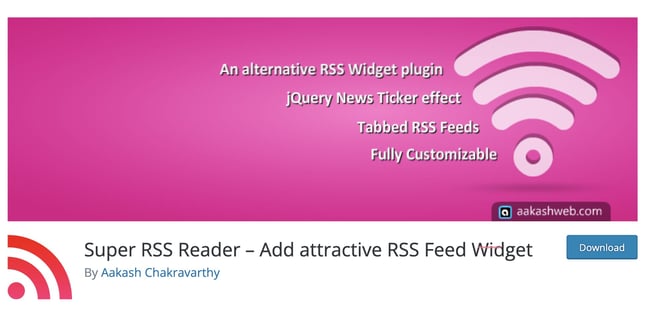
4. Category Specific RSS Feed Subscription

5. WordPress RSS Feed Retriever
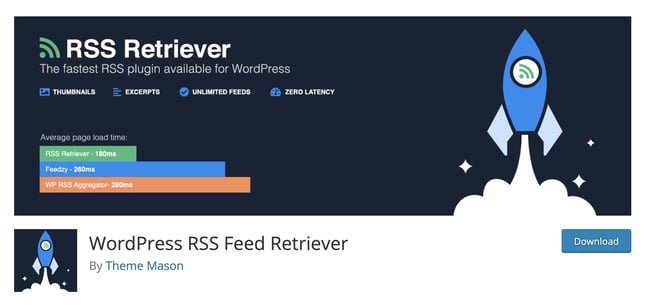
6. RSS Includes Pages
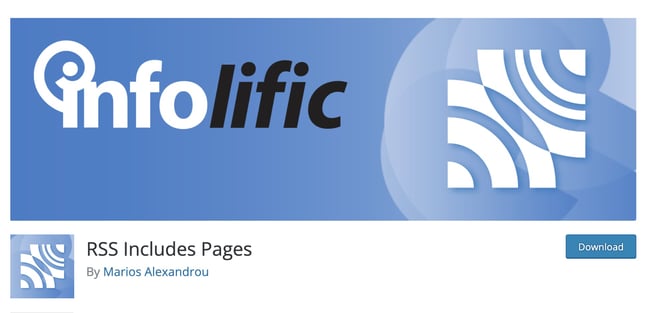
7. RSS Feed Widget
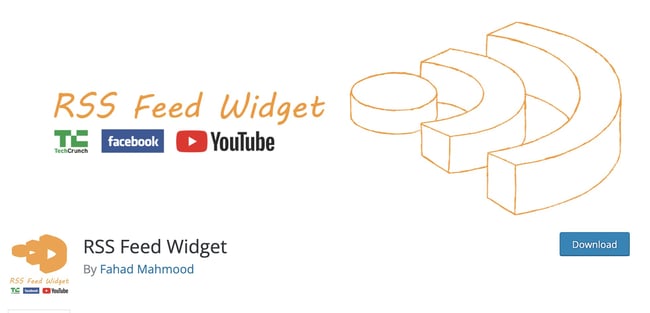 Image Source
Image Source 8. Featured Images in RSS for Mailchimp & More
 Image Source
Image Source 9.WPeMatico RSS Feed Fetcher
 Image Source
Image Source 10. Add Featured Image to RSS Feed
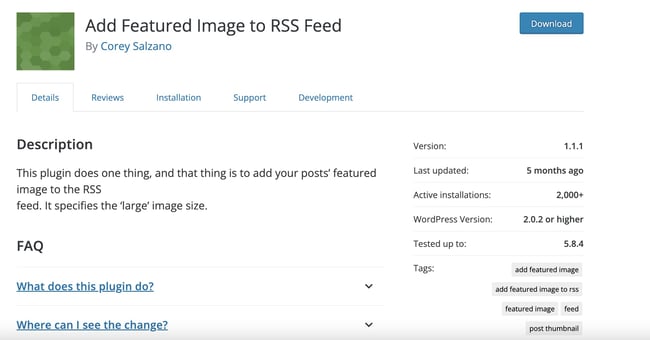 Image Source
Image Source 11. Custom Simple RSS
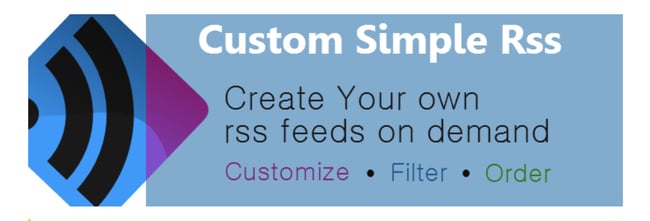 Image Source
Image Source Give RSS a Try

Source: https://blog.hubspot.com/website/wordpress-rss-feed
0 Response to "How to Get Rss Post Feed From Wordpress"
Postar um comentário